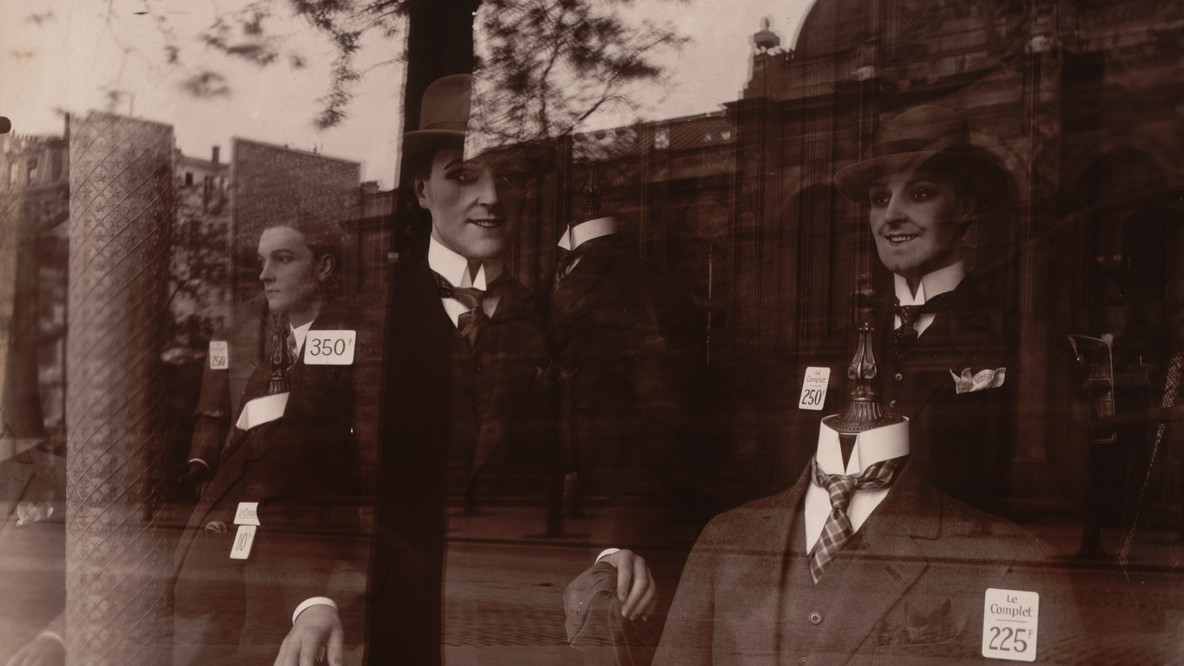Considered the pioneer of documentary photography: Who is Eugene Atget?
In 1921, he made a documentary photo work about prostitutes. While doing this work, he was arrested as a customer. He ate nothing but sugar, milk, and bread. Unfortunately, he died in poverty.

(1857-1927) French photographer. Jean-Eugene August Atget was born on February 12, 1857, in Libourne, near Bordeaux. His parents died when he was very young; He was raised by his uncle. He worked on ships as a steward in his early youth. After many sea voyages, he entered the conservatory in 1879 to become a theater actor. However, he left school in 1881 and joined a traveling theater group on tour. He left the theater in 1889 and became interested only in painting. He was painting nature. He was interested in the products and working styles of the important painters of the period. He was intrigued by the fact that they sometimes made use of photography. Due to financial difficulties, he decided to become a photographer in 1898. Although he gradually specialized in photography and produced very successful products, he could not escape poverty, and his works were generally few in sales. Its main customers were museums and historical institutions. Benefiting from his photographs in the field of painting, he received help and attention from artists such as Braque and Utrillo. In 1921 he received an order to produce a photographic series about prostitutes. After a period of work, where he faced various difficulties and was arrested once as a customer, he completed the job. Moreover, although he was only asked to photograph prostitutes in a simple way, he went far beyond this in his photographs, reflecting the social environment and attitudes of the people he was subject to. In 1926, the famous American painter and photographer Man Ray, together with his assistant Berenice Abbott, visited his workshop and published four photographs of Atget, whose works he liked very much, in La Revolution Surrealiste, an important art publication. This was the only event in his life for which he was recognized by the art circles.
In Atget's era, photographers generally preferred studio work and blurry pictures. On the other hand, Atget wandered around the streets, photographing everything he deems worth detecting, and obtained a clear image due to the features of his camera and the techniques he used. Thus, he became the pioneer of documentary photography. However, his effort is not limited to viewing the environment and what is going on. His work reflects his close and warm interest in the life of the people of Paris. Moreover, this does not only appear in the choice of subject; Atget was able to convey the environment, conditions, and atmosphere of the people he photographed with all his vitality. It is possible to feel the Parisian life even in many of his photographs, in which he displays empty streets or shop windows in the very early hours of the morning, and does not include human figures. Beginning around 1900, Atget was fed only bread, sugar, and milk, as he thought other foodstuffs to be poisonous. On the other hand, the weariness of his working order caused his health to deteriorate. That's why he has been able to produce less in the last few years. The death of his lover in 1926 also shook him deeply. He died on August 4, 1927. Berenice Abbott, who provided financial assistance to him in the last two years of his life, preserved and organized his works, which numbered up to ten thousand, and transferred them to the Museum of Modern Art in New York in 1968, ensuring that they survived.
In his photographs, details are clearly given—within the limits of technical possibilities. But this direct, unpretentious way of expression is often adorned with impressive visual elements that support the treatment of the subject. In his unconventional compositions, in which the reflections of the objects on the street on the glass and the images of mannequins and clothes are intertwined, the tendency is to not be content with determining the world as it is clearly seen. In documentary photographs, the simple but impressive form features that go down to the details form a harmonious whole with the subject. The immediacy of his expression does not easily turn into monotony; The emotional or poetic side of his works reaches the audience.
Atget, who did not attract much attention during his life, had important and lasting effects on the next generations. At a time when photography was trying to develop as an independent artist as opposed to painting, Atget gave a new direction to these pursuits with his works proving that documentary works can also have artistic qualities.
---------------
MoMA
Eugène Atget
French, 1857–1927
https://www.moma.org/artists/229
Photos
https://www.artnet.com/artists/eug%C3%A8ne-atget/
